Real cases
C1 - corrosive sulfur with DBDS (Qatar 2012)

Scenario
Chemical sector company , 4 step-up transformers
Technical specifications of transformers:
Manufacturer: Getra
Year: 2000
Power [MVA]: 47
Voltage [kV]: 34
Oil mass [kg]: 12,000
Oil type: Nynas Nitro 10 GBN
Solution
Solution: selective depolarisation treatment by Sea Marconi in on-load mode (transformer energised and under load throughout the entire treatment).
Treatment guaranteed DBDS < 10 mg/>g
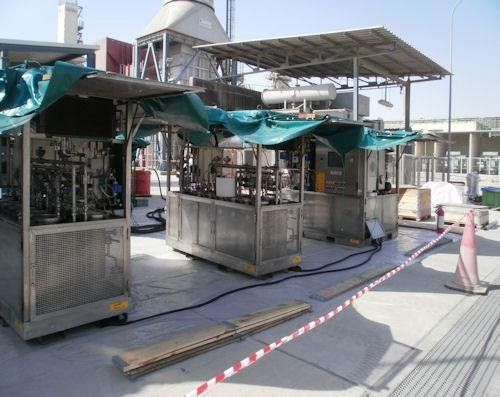
| Before treatment | After treatment | |
|---|---|---|
| DBDS [mg/kg] | 125 | < 5d> |
| H2O [mg/kg] | 7 | 3 |
| TAN [mg KOH/g] | < 0,095d> | < 0,01d> |
| DF | 0.0190 | 0.0033 |
C1 - corrosive sulfur with DBDS (Chile 2012)
Scenario
Primary substation with 3 Grid transformers and 2 shunt reactors
Technical specifications of transformers:
Manufacturer: Zaporozhtransformator
Year: 1998
Power [MVA]: 250
Voltage [kV]: 345
Oil mass [kg]: 118,000
Oil type: Nynas naphthenic oil
Analytical and diagnostic results
Analysis and subsequent diagnosis performed by Sea Marconi on the machines of the customer showed a marked presence of DBDS

Solution
Solution: selective depolarisation treatment by Sea Marconi in both on-load and off-load modes.
Treatment guaranteed DBDS < 10 mg/>g
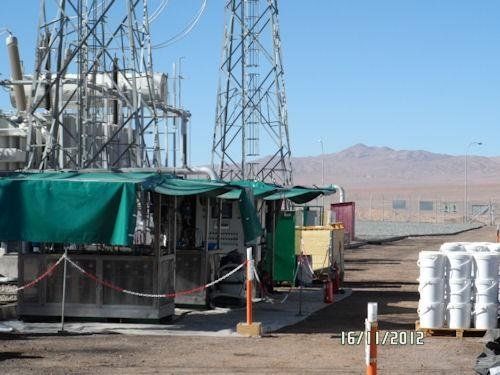
| Before treatment | After treatment | |
|---|---|---|
| DBDS [mg/kg] | 144 | < 10d> |
| H2O [mg/kg] | 16 | 5 |
| TAN [mg KOH/g] | < 0,01d> | < 0,01d> |
| DF | 0.0026 | 0.0015 |
C2 - corrosive sulfur without DBDS (Middle East 2009)
Scenario
Thermal power station with 8 step-up transformers(Middle East)
Technical specifications of transformers:
- Power [MVA]: 175
- Voltage [kV]: 400
- Oil type: SHELL Diala AX naphthenic oil

Step 1
The diagnoses of 2009 showed:
Total sulfur = 200
mg/kg
TCS (Total Corrosive Sulfur) = 157
mg/kg (DBDS eq.)
CCD Test = corrosive
IFT = 19
mN/m
DBTP = 38
mg/kg
Step 2
Breakdown in 2013
Step 3
Analysis after failure in progress ...
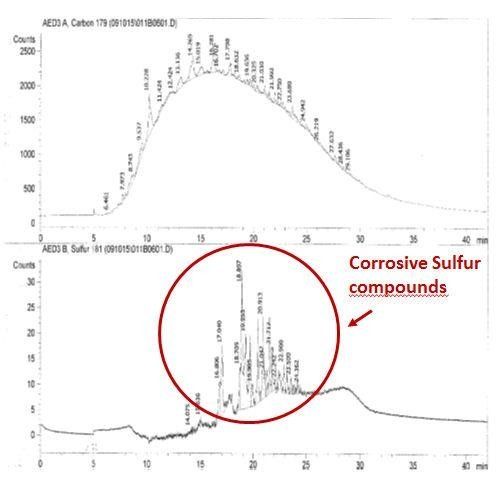
Step 4
Selective depolarisation (Chedcos) treatment recommended for the removal of sulfur compounds (NOT DBDS) responsible for corrosion.
C3 - corrosive sulfur from SDBP (Uruguay 2010)
Scenario
Uruguayan utility with transformers
October 2012: Breakdown two weeks after reclamation with Fuller's earth treatment(performed by local operator).
Technical specifications of transformer:
Transformer type: grid transformer with OLTC (on-load tap changer)
Manufacturer: Hitachi
Year: 1977
Power [MVA]: 425
Voltage [kV]: 500
Oil mass [kg]: 58,000
Oil type: YPF65 non-inhibited paraffinic oil
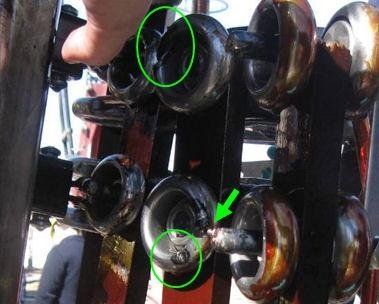
Analysis and diagnosis (by the owner)
Following field tests, the owner's diagnosis speculated a hugh energy discharge in the main casing. Subsequently, after laboratory tests, a f ailure emerged in the on-load tap changer which produced a discharge in the main casing.
Reclamation with Fuller's earth treatment rendered the oil aggressive towards the silver surfaces of the contacts.
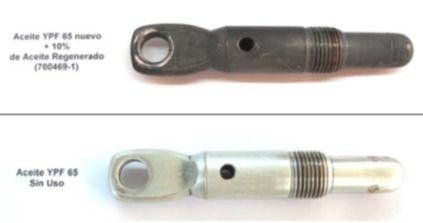
Sea Marconi analysis, diagnosis and expertise
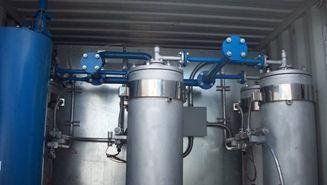
Columns with reactivated Fuller's earth (NOT used by Sea Marconi)
"At relatively high temperatures, sulfur-containing oil molecules may decompose and react with metal surface to form metal sulphides" (IEC 60422 Ed. 4 – 2013 art. 5.17)
«At relatively high temperatures, the oil molecules containing sulfur may decompose and react with metal surfaces, forming sulfides" (IEC 60422 Ed. 4-2013 art. 5.17)
Sea Marconi classifies this case as C3 – corrosive sulfur from SDBP, which stands for sulfur deterioration by-products, i.e. corrosiveness caused by by-products of sulfur deterioration.
"The system for the regeneration of the oil used by the owner uses columns with Fuller's earth which are reactivated by "uncontrolled" combustion. Because of the high temperatures, the sulfur compounds (dibenzothiophene, etc.) naturally present in oil – together with the interaction with additives (DBDS, etc.) – decompose into by-products of sulfur deterioration (SDBPs such as H2S, mercaptans, etc. with corrosive properties) forming sulfides such as as CuS, Cu2S, Ag 2S, etc.". Ref. other real cases of National Grid, ABB, etc.
| Analytical results | |
|---|---|
| CCD | Corrosive |
| TCS DBDS Eq. [mg/kg] | 131 |
| ASTM 1275 B | 4C |
| DBTP [mg/kg] | 24 |
| TAN [mg KOH/g] | 0.01 |
| DF | 0.018 |
| IFT [mN/m] | 0.018 |








